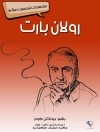New, carefully focused essays providing a thorough examination of Hemingway’s groundbreaking non-fictional work.
Published in 1932,
Death in the Afternoon reveals its author at the height of his intellectual and stylistic powers. By that time, Hemingway had already won critical and popular acclaim for his short stories and novels of the late twenties. A mature and self-confident artist, he now risked his career by switching from fiction to nonfiction, from American characters to Spanish bullfighters, from exotic and romantic settings to the tough world of the Spanish bullring, a world that might seem frightening and even repellant to those who do not understand it. Hemingway’s nonfiction has been denied the attention that his novels and short stories have enjoyed, a state of affairs this
Companion seeks to remedy, breaking new ground by applying theoretical and critical approaches to a work of nonfiction. It does so in original essays that offer a thorough, balanced examination of a complex, boundary-breaking, and hitherto neglected text. The volume is broken into sections dealing with: the composition, reception, and sources of
Death in the Afternoon; cultural translation, cultural criticism, semiotics, and paratextual matters; and the issues of art, authorship, audience, and the literary legacy of
Death in the Afternoon. The contributors to the volume, four men and seven women, lay to rest the stereotype of Hemingway as a
macho writer whom women do not read; and their nationalities (British, Spanish, American, and Israeli) indicate that
Death in the Afternoon, even as it focuses on a particular national art, discusses matters of universal concern.
Contributors: Miriam B. Mandel, Robert W. Trogdon, Lisa Tyler, Linda Wagner-Martin, Peter Messent, Beatriz Penas Ibáñez, Anthony Brand, Nancy Bredendick, Hilary Justice, Amy Vondrak, and Keneth Kinnamon.
Miriam B. Mandel teaches in the English Department of Tel Aviv University.
Cuprins
Introduction – Miriam B. Mandel
The Composition, Revision, Publication, and Reception of
Death in the Afternoon – Robert W. Trogdon
‘Devout Again by Cynicism’: Lord Byron and
Don Juan in
Death in the Afternoon – Lisa Tyler
‘I like you less and less’: The Stein Subtext in
Death in the Afternoon – Linda Wagner-Martin
Subject and Author: The Literary Backgrounds of
Death in the Afternoon – Miriam B. Mandel
‘The Real Thing’? Representing the Bullfight and Spain in
Death in the Afternoon – Peter Messent
‘Very Sad but Very Fine’:
Death in the Afternoon’s Imagist Interpretation of the Bullfight-Text – Beatriz Penas Ibanez
‘Far from Simple’: The Published Photographs in
Death in the Afternoon – Anthony Brand
Deleted ‘Flashes’: The Unpublished Photographs of
Death in the Afternoon – Anthony Brand
‘¿Qué tal, hombre, qué tal?’: How Paratexts Narrow the Gap Between Reader and Text in
Death in the Afternoon – Nancy Bredendick
‘Prejudiced through Experience’:
Death in the Afternoon and the Problem of Authorship – Hilary Justice
‘The Sequence of Motion and Fact’: Cubist Collage and Filmic Montage in
Death in the Afternoon
Death in the Afternoon – Amy Vondrak
The Legacy of
Death in the Afternoon: Norman Mailer and Barnaby Conrad – Keneth Kinnamon












